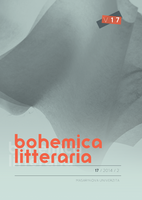
Populární kultura jako ošemetný indikátor
Recenze na knižní studii Přemysla Houdy Intelektuální protest, nebo masová zábava? Folk jako společenský fenomén v době tzv. normalizace (Academia: Praha, 2014)
More...We kindly inform you that, as long as the subject affiliation of our 300.000+ articles is in progress, you might get unsufficient or no results on your third level or second level search. In this case, please broaden your search criteria.

Recenze na knižní studii Přemysla Houdy Intelektuální protest, nebo masová zábava? Folk jako společenský fenomén v době tzv. normalizace (Academia: Praha, 2014)
More...
This article analyses the Latvian reading public’s perceptions of the Japanese annexation of Korea in 1910 based on an examination of a heretofore untapped source of information in the field of Korean studies: Latvian-language newspapers. The information and analysis of the events which appeared in Latvian press can be regarded as Latvian reflection of the situation in Korea and East Asia before WWI.
More...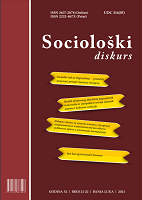
Numerous phenomena of public and hidden play (fighting for something or presenting something) are present in all human ages, from the primordial community to the present day. Play, as dealing with imaginary illusion, is part of man’s individual and collective existence. All five existential phenomena: death, love, struggle, work and play, are encompassed by play and expressed through play (E. Fink). Play permeates all significant primordial activities of common human life (speech, myth, cult, etc.). All stimulating forces of social life (from economics to art) have their roots in the act of playing. Play elevates human existence above the purely biological, vegetative one. It decorates and complements life. This points to its importance for the individual (biological function) and society (expressive power, creation of spiritual and social ties, expression of the ideal of living together) (J. Huizinga). Impulses and elements of play, which exist in and out of the world of play, determine the existence of different types of plays: competitions, games of chance, disguising and plays of ecstasy. The dominance of some of these types of play in a society reflects the society - its style and values (R. Kajoa). In modern society, elements of play are increasingly disappearing, and play is increasingly manifesting pathological conditions and tendencies of individuals and groups.
More...
Numerous phenomena of public and hidden play (fighting for something or presenting something) are present in all human ages, from the primordial community to the present day. Play, as dealing with imaginary illusion, is part of man’s individual and collective existence. All five existential phenomena: death, love, struggle, work and play, are encompassed by play and expressed through play (E. Fink). Play permeates all significant primordial activities of common human life (speech, myth, cult, etc.). All stimulating forces of social life (from economics to art) have their roots in the act of playing. Play elevates human existence above the purely biological, vegetative one. It decorates and complements life. This points to its importance for the individual (biological function) and society (expressive power, creation of spiritual and social ties, expression of the ideal of living together) (J. Huizinga). Impulses and elements of play, which exist in and out of the world of play, determine the existence of different types of plays: competitions, games of chance, disguising and plays of ecstasy. The dominance of some of these types of play in a society reflects the society - its style and values (R. Kajoa). In modern society, elements of play are increasingly disappearing, and play is increasingly manifesting pathological conditions and tendencies of individuals and groups.
More...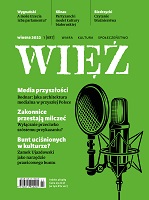
W zerwaniu ruchu młodzieżowego lat 60. z tradycyjną kulturą chrześcijańską można usłyszeć echo Logosu. To był czas religijnej melancholii. Joseph Ratzinger przyznawał, że „po dwóch tysiącach lat nie widać, aby ten świat stał się nową rzeczywistością”. W miejsce obumierania wszedł kontrkulturowy witalizm.
More...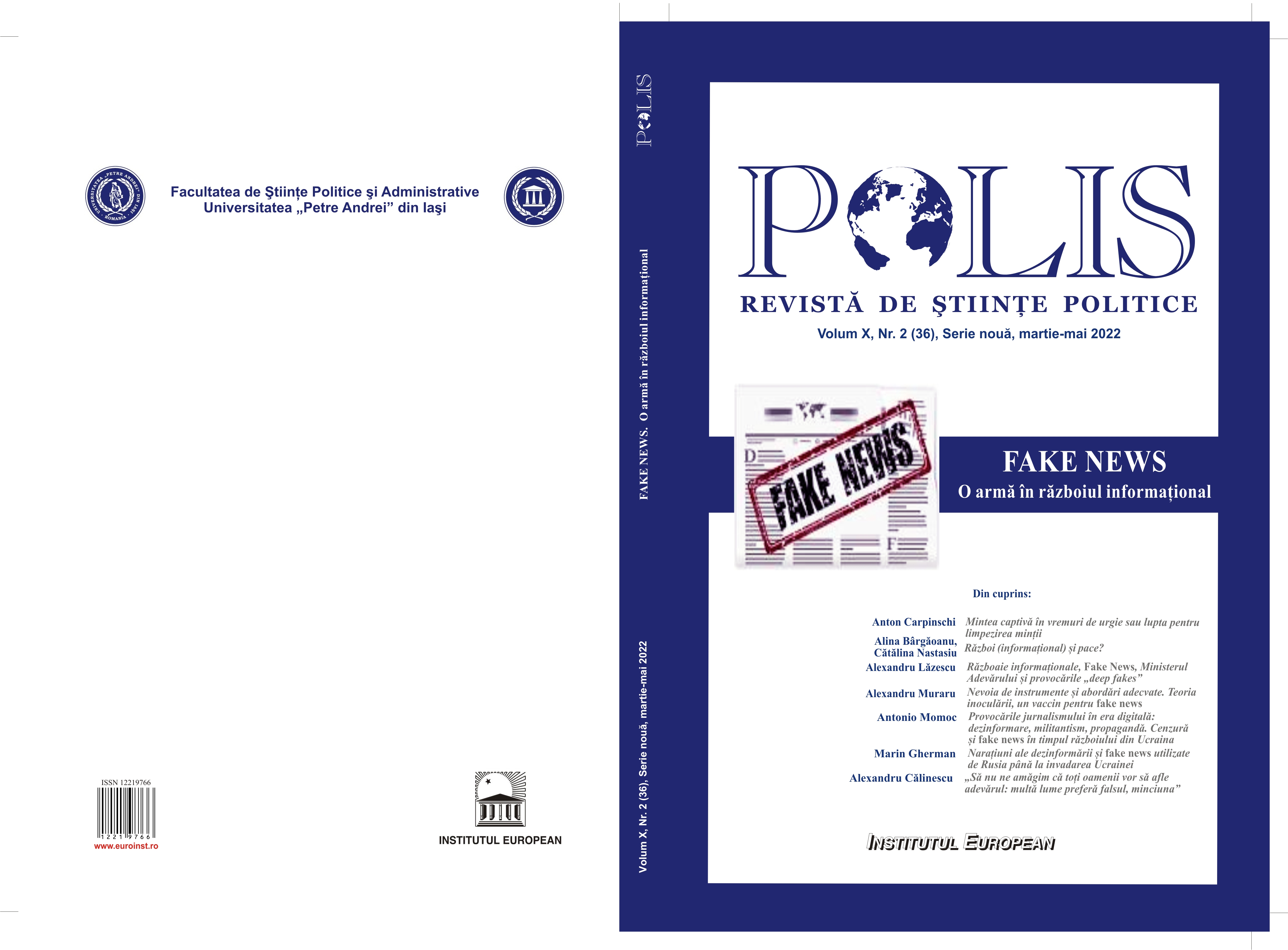
Information wars and disinformation have become essential tools in the geopolitical battle which became extremely tense because of the Ukrainian war. In this battle, Russia and China exploit the open character of the Western societies, the deep societal faults created by the inner identity wars and the new technologies, from Social Media to „deep fakes”.
More...
Electoral behavior constitutes an extremely important component in a democratic society, with a major impact on the whole country. This differs according to the environment in which the voter lives, and the electoral behavior of rural voters is important because rural Romania represents almost half of the country. Residents of rural communities are guided by different values and standards than those in urban areas, because many factors such as poverty, poor education, ageing population, traditional mentality intervene and make the rural voter have different motivations when choosing to participate in voting.
More...
The article analyses the role of trust in the underground structures of the Polish opposition in the 1980s. The empirical material on which the analysis is based comprises historical sources concerning the history of one of the opposition groups in Warsaw, formed around an underground trade union structure (Inter-Enterprise Coordinating Committee), underground periodical (“Wola”) and a few other oppositional initiatives. The author looks for answers to the following questions: What types of trust can we find in the underground? What did it mean that one conspirator trusted another? and What was trust based on? First, the author characterizes the Solidarity movement after the imposition of martial law and shows why during this time the problem of trust was so important. Then he explains why this topic is interesting and useful not only for a historian of Solidarity but also for other researchers. He places his research in the context of historians’ works about trust, and especially about the problem of trust in communist countries. The author proposes two classifications of trust in the underground. He distinguishes trust regarding the following traits of colleagues: reliability, discretion, and integrity. The second classification concerns the basis for trust. The first type (“old”) is trust based on prior contact. The second type (“new”) is trust built during underground activity. In the conclusion, the author considers the role of trust in underground activity. The author puts forward the thesis that in opposition activities, trust was much more important than shared political views, to which historians of the Polish opposition generally attach great importance.
More...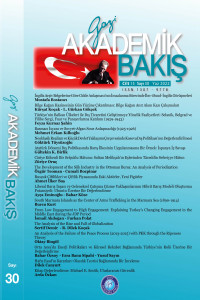
Afghanistan, bordering the Turkestan, has a priority in the foreign policy of the Tsarist Russia and the Soviet Union. During the 19th century, Afghanistan witnessed the struggle for influence between Tsarist Russia and England. The parties agreed that Afghanistan should be a buffer zone so that this competition, called the Great Game, does not cause irreparable damage. However, the events experienced during this rivalry increased the sensitivity of Tsarist Russia against attacks from Turkistan and Kazakh Steppe in the south due to the absence of geographical barriers. Tsarist Russia left this legacy to its successor, the USSR. After the 1917 October Revolution, the Bolshevik administration in Turkestan was not accepted by the local population. A rebellion movement broke out against the Bolshevik administration, which was seen as an obstacle to the independence of the region. The Soviets, who did not want to lose Turkistan tried to end the Basmacı Rebellion quickly. During this revolt, the Basmachi’s attacked the Soviet targets in Turkestan and returned to Afghanistan after these attacks. For the Soviets ending this freedom movement was the primary goal. Therefore, the control of the border between the two countries has gained importance. However, due to the summer drought, the drying up of the Ceyhun and Penc Rivers and the merger of the Urtha Tugai Island on the Afghan coast made this control difficult. A serious crisis has emerged between the two countries. For the solution of the crisis, the Soviet’s asked Afghan State to end her support to Basmachis.
More...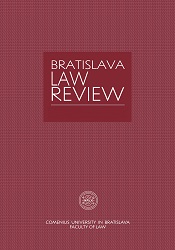
The contestations arising from the introduction in various European countries of mandatory vaccination against Covid-19 for certain categories of workers are expressions of a profound malaise, not new and common to Western societies. Misinformation about vaccines is not a new phenomenon, but has been heightened due to the rise of social media, clearly evident during the Covid-19 emergency. These conflicts have a significant social impact and can hinder the struggle against the spread of the virus. This work analyses the origins and legal implications of this growing social mistrust in science, which jeopardises the stability of the constitutional order, founded on the principles of trust and solidarity.
More...
The workers’ movement of Bosnia and Herzegovina was born and began to develop at the end of the 19th and beginning of the 20th centuries in the specific socio-political and socio-economic conditions. The inevitability of the historical development of this country imposed at the same time a struggle for national liberation from foreign powers, plus the struggle for the liquidation of the feudal agrarian system of serfdom, plus a struggle for social justice. The workers’ movement was involved in the activities concerning these enormous social problems proportionately to its strength and degree of organization, but, at the same time, relative to the internal political conditions and the influences of the international workers' movement. The people of Bosnia and Herzegovina in 1878, after a series of uprisings and rebellions, suffered the historical fate of being simply handed over from one outside ruler to another. This change took place without any radical changes in social relationships. The semi-feudal relationships, which had been left behind by the Turkish Empire, simply associated with the modern capitalist system of colonial rule by the Austro-Hungarian monarchy which subordinated to its own interests the economic strength of the people and the development of their political life. The relative economic prosperity had barely affected the Bosnian and Herzegovinian social structure of the Turkish period. Even on the eve of the World War I, more than 650,000 people were attached to certain serf-relationships, and more than 86V0 of the population lived off the over¬ -extended and very backward agriculture. This state of affairs had an influence on all forms of socio-political life, and on the development of the workers’ movement as well. The Austro-Hungarian government exploited the internal national and religious divisions which existed and which supported certain domestic political forces and clericalism as well, all of which in combination formed a united front to oppose the workers’ movement. In such socio-political and economic conditions, which made Bosnia and Herzegovina backwards in relation to other European and Balkan countries, the workers’ movement was created and began to develop. From the first workers’ drives, at the beginning of the 90’s of the last century, through the founding of the first supporting workers’ societies, until the creation of a united sindicate organization, all the activities of organized labor were aimed at providing for the most fundamental conditions for survival. In these activities the most notable persons were workers from other regions of the Austro¬ -Hungarian empire. The founding of the Executive Workers’ Council on August 27, 1905, meant a great step forward in the creation of a modern workers' movement. Although the rules of the Council, in accordance with the requirements of the state, stated that it was »without political significance«, it became an organized base for political work and for the creation of political organization of workers. A general strike of the workers of Bosnia and Herzegovina in May of 1906, represented, at the same time, an end of the sindicate phase and beginning of the political organization of the workers. Only with the atmosphere created by this strike was it posibble to take more daring steps in the creation of the Social-Democratic Party of Bosnia and Herzegovina The fouding congress for this Party, held the 28th and 29th of June, 1909 in Sarajevo, signified the completion of the process of making organized labor in this country an established economic, social and political factor; thus the formation of the modern Bosnian and Herzegovinian workers’ movement was completed. This movement was constituted on the ideals and political concepts and positions of the Second International, i. e. on the examples of its sections represented by the Social Democratic parties of Germany, Austria, Serbia, Croatia, and Slavonia. The Social Democratic party of Bosnia and Herzegovina stood for the ending of feudal relationships and against colonial exploitation, and for »the introduction of a socialist society in place of the capitalist one«, but it accepted »legitimate rigths« and parlamentarianism as the methods for striving towards these goals. Accepting self-determination and self-government of the people »in the state, regional, and local organizations« the party regarded all Yogoslav nationalities as »one united people«. The period of development of the workers’ movement in Bosnia and Herzegovina until 1909 was characterized by the fact that the working class underwent organization according to the principles of the modern sindicate movement of Central European countries and that, following this example, it was quickly politically organized. The movement was primarily concerned with economic and social struggles, but the political conditions in the country under foreign rule necessarily led to the inclusion of a significant element of political activities in their struggle. They followed various examples within the frame of the Second Internationale in their ideological and political work, due to a feeling of lack of ideological maturity, political decisiveness, and their own ideas for the strategic problems of the working class struggle. But in spite of all this, there was evidence of an original and individual orientation which reflected recognition of the conditions for all significant questions of socio political life in Bosnia + Herzegovina.
More...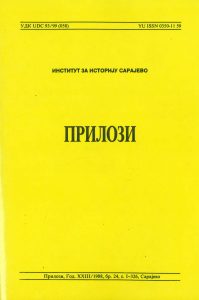
The author brings out some more significant characteristics of the National Liberation Movement (NLM) in Slavonski Brod in the period 1941-1945. The major organizer and the leader of the National Liberation Struggle (NLS) against the occupier and its Quislihgs was the organization of Communist Party of Yugoslavia (CPY), with the abundant revolutionary tradition and a solid stronghold among the working class and the young people.
More...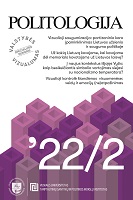
By using a theoretical approach to the critique of surveillance capitalism, and by drawing on public discourse sources on facial recognition (FR) technology, this paper analyzes visual surveillance in contemporary societies. Currently, there are both numerous instances of a sudden development of FR capabilities on a global scale as well as efforts to prevent the development of what is called the “most dangerous technology.” This paper also questions the techno-solutionism that enables “perfect” mathematical human cognition. Overall, the paper sheds light on the global disagreement on the regulatory environment for FR technology, with different countries, states, or big cities treating biometric data protection differently. There is also a confluence of predicaments and legal concerns in the public sphere regarding FR. Nevertheless, it is possible to outline the typical narratives that emerge in media discourses, highlighted in this paper using three different examples. These are (1) concerns about human rights and privacy (the US case), (2) a “soft” indecisiveness about promoting unfettered innovation on the one hand, and preventing human rights abuses on the other (the EU case), and (3) the fear of digital data being collected by a hostile authoritarian state, namely China (the Lithuanian case).
More...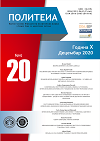
This paper analyses the correlation between political activism, political participation, and certain value orientations, as crucial parts of modern governance in society today. A sample of the survey were members of the ruling and opposition parties, who were structured by age, place of residence, political affiliation, and role in local parliaments in six cities in Serbia. Results show a mixture of pre-modern (traditional), modern, and postmodern values, with traditional values still being viable, which could be one of the factors that significantly reduces the process of social transition. Socio-demographic variables and value orientations (autocratic-democratic, traditional-modern), along with the aspects of political culture, determine political behaviour to a large extent. The model of political activism, on which the study is based, is the model of socio-economic status. The results of the research suggest that a new, enhanced model should be proposed, entitled socio-cultural model of political activism.
More...
Using the ethno-methodological theoretical paradigm and the historical method, the author comes to the conclusion that culture, politics and the artistic atmosphere that enriches space form an indivisible structure of events and phenomenological perception of the culture of resistance in modern society. The culture of civil resistance present in art is inseparable from political movements and opposition to repression. Political protests have also become a form of performance that the author seeks to observe from a broader context of street culture in the theoretical perception of the epistemology of space. This way, the tendency and ability to see the meaning and spirit of various manifestations is allowed to come forth. Socio-cultural preconceptions of various art forms and manifestations as well as their historical, political, and ideological conditioning in the global environment and (post) globalism are all explored. As the main research subject, the author takes caricature and art of aphorism, perceived as traditional forms of resistance, and performance, due to its visual and expressionist-based message as a relatively new artistic practice and a more effective form of civil resistance. By determining the meaning of phenomena using linguistic and visual representations, the author notices the political nature of their expression. In this paper, the author strives to break the ‘modern dogma’ by which politics and art are in an inherent conflicting relationship. Therefore, the basic thesis of the text is the author’s effort to bring the goals of politics and art conceptually closer through the basic proclamation of human freedom. The foundation of freedom and creative choice constitute their common and fundamental value. Performance establishes a rational compromise in which the government and opposition groups believe in the democratic potential of their role, pacifying the space in the new circumstances. Ideological fervor and propaganda goals make an unfortunately thin line between the cultured and the uncultured.
More...
According to data of UNESCO, in 2013, Latgalian language with 150,000 users was recognised as one of the world’s endangered and vulnerable languages, as all generations still use the oral form, but the sustainability of the language is seriously jeopardised, since the number of young language users decreases. Pursuant to the EU directives and recommendations for preservation, research and development of regional and endangered languages, as well as the Guidelines for the State Language Policy 2021–2027 regarding development, disclosure on the web and accessibility of varied text corpus, in 2020, a group of researchers of the Rēzekne Academy of Technologies in the Project of State Research Programme Digital Resources of Humanities: Integration and Development (No. VPP-IZM-DH-2020/1-0001) started its work on the development of the Contemporary Latgalian Speech Corpus (MuLaR) aimed at the documentation, research, studies and acquisition of Latgalian. The aim of the article is to identify and analyse the issues that are important in the process of creating MuLaR, applying the referential analysis of the scientific literature and comparative methodology. In turn, applying the analytical-synthetic method and based on the experience accumulated by the corpus creators, there was developed an initial model for the corpus architectonics and technological solutions, covering such issues as ensuring a representative Latgalian speech corpus, bearing in mind the territorial distribution of Latgalian language communities and diversity of Latgalian patois; the most appropriate methods to document natural, spontaneous language: collection of new data, opportunities to use the existing recordings (interviews, TV, radio broadcasts, field research data collections), other databases (reiti.rta.lv); understanding metadata; ethical aspects of the speech corpus; transcribing (software, conventions to reveal the features of spoken text as accurately as possible); creation of an accessible, easy-to-use open-access platform, using the experience of creating oral speech corpuses for lesser-used languages / dialects in other countries. The article declares the main challenges for the corpus development after the initial validation of the corpus data, including in relation to the morphological tagging possibilities of the corpus.
More...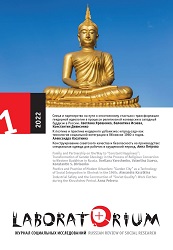
Review of: Eliot Borenstein. Pussy Riot: Speaking Punk to Power. London: Bloomsbury Academic, 2021. 135 pp. ISBN 9781350113534.
More...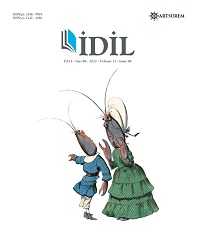
The Euro crisis in 2009 and then the influx of refugees to the European borders in 2015 cause economic and security concerns in the European society. The serious problems created by the crises in the social and economic fields also affect the political field. Confidence in the ruling neo-liberal centrist parties decreases among the voters who turn to new political pursuits. Turning the negative atmosphere that creates discomfort on the European society into an opportunity, the far-right parties significantly increase the public support with the populist rhetoric they build on ethnic, cultural and religious affiliations. The far-right parties, which follow an effective political communication strategy in order to make their ideology and policies visible to the public, have an impact on voter behavior with the propaganda posters they use in their election campaigns. In developed Western European countries where the political poster culture is vigorously maintained, especially in Germany with the largest immigrant population, the ethnic and cultural minorities, whose number is increasing day by day in the country with the mass migration, become the main argument of far-right populist propaganda. When evaluated in this context, the propaganda posters used by the "Alternative Party for Germany (AfD)", one of Germany's leading far-right parties, draw attention. Developing an anti-foreign and anti-immigrant discourse through the representations of 'women' on election posters, the AfD emphasizes the German identity and culture. It strengthens its own ideological discourse by making ethnic, religious and cultural discrimination over women. This study deals with the propaganda posters selected with the purposeful sampling model in terms of graphic form and content, focusing on the ideological discourse built on the "image of woman", which the Alternative Party for Germany frequently resorts to in election posters.
More...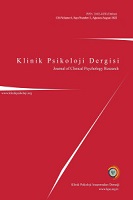
The growing body of research on the role of fatalism on the psychology of various health-related behaviors has witnessed various conceptualization and assessment efforts. The importance of the topic for its implications for behavioral change necessitates the need for better conceptualization and measurement of fatalism. The present study aimed to develop a reliable and valid self-report measure in Turkish for assessing lay beliefs about general fatalism (GFAT) in a predominantly Muslim and collectivistic culture. To this end, a scale development study was conducted 361 adult participants (Mage = 32.49, SDage = 12.97) recruited via snowball sampling in social media platforms. The exploratory factor analyses conducted on the 62 GFAT items revealed a seven-factor structure with 58 items, explaining 59.89% of the total variance. The obtained multi-dimensional factor structure was represented with destiny, functionality, helplessness, uncontrollability, valuation, luck, and submission subscales. The Cronbach’s alpha coefficients of the GFAT subscales ranged between .74 and .95, demonstrating the internal consistency of the scale. The meaningful and significant correlations of the subscales with external control orientation, just world belief, and religiosity measures evidenced the construct validity of the scale. Overall, findings demonstrate that the GFAT Scale is a reliable and valid self-report measure for assessing individual differences in lay beliefs about fatalism. The developed scale can be used to measure the multifaceted construct of fatalism in future studies aimed at understanding its influence on the psychology of behavioral change, with implications for increasing the functioning of individuals and communities with respect to social and practical problems.
More...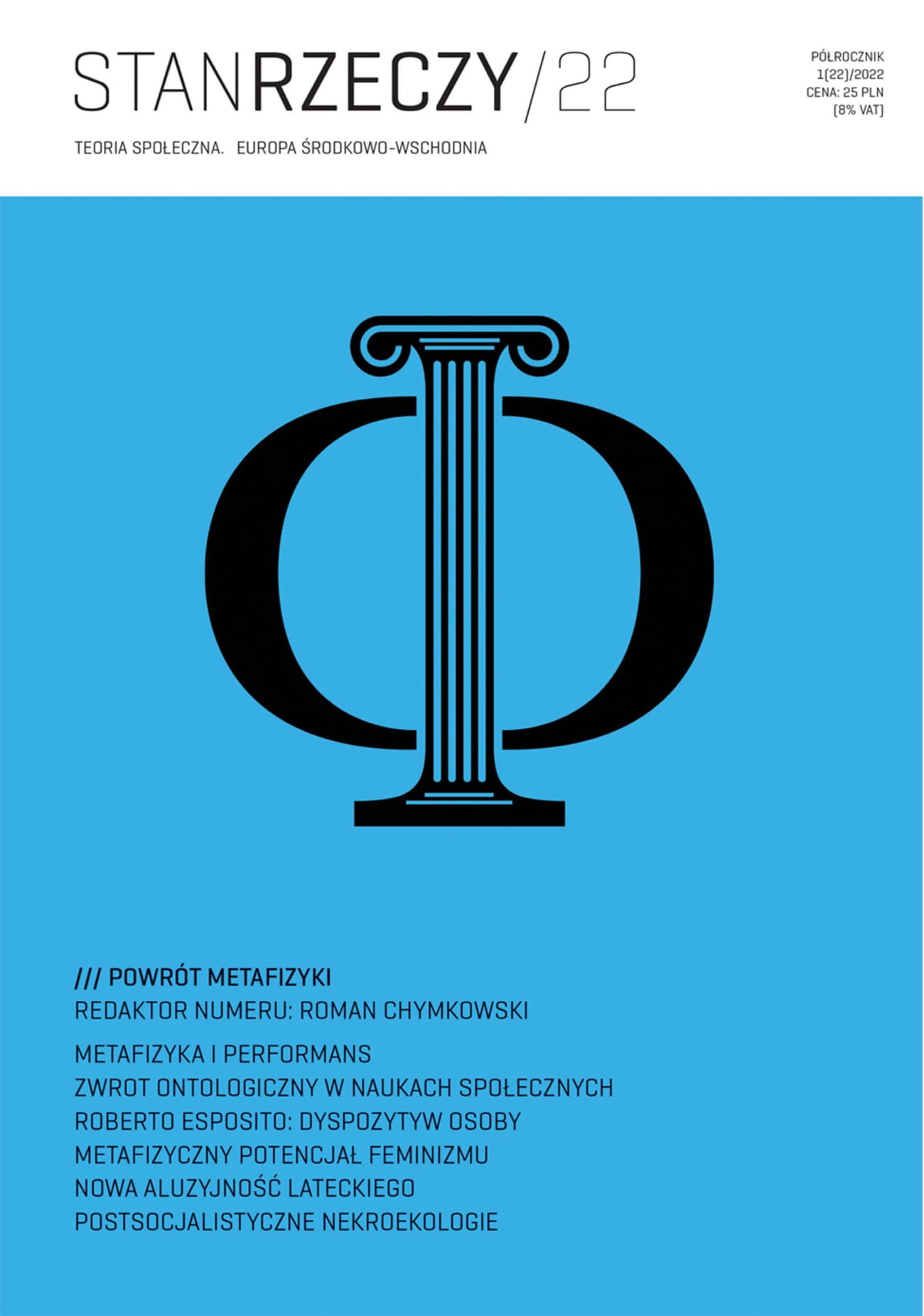
The aim of the article is to present the psychosocial and cultural responses of Africans to the Ebola epidemic in 2014–2016 and the coronavirus pandemic, which was announced in 2020 and has lasted until today, as well as to show the collision – at the level of practices, senses, and images – of religiosity with the scientifically motivated fight against these epidemic threats. The first part of the article reconstructs the “sociology of knowledge” about viruses in African societies. The importance of conspiracy theories about the sources of disease, the indolence of governments in making citizens aware of the scale of threats, and the role of expert systems in shaping the perception of infectious diseases, are shown. Then, the African perception of Western medicine, including vaccination programmes, is discussed. The second part of the article presents the evolution of African customs during plagues, including funeral customs and religious practices. Selected mechanisms of domestication of plagues are discussed: the construction of the figure of a scapegoat, and contemporary forms of the dance of death. Selected political and economic phenomena, questions of faith, the clash of tradition and modernity, and – as the German phenomenologist Dietrich von Hildebrand wrote – the metaphysics of the community, form the context of the analysis.
More...